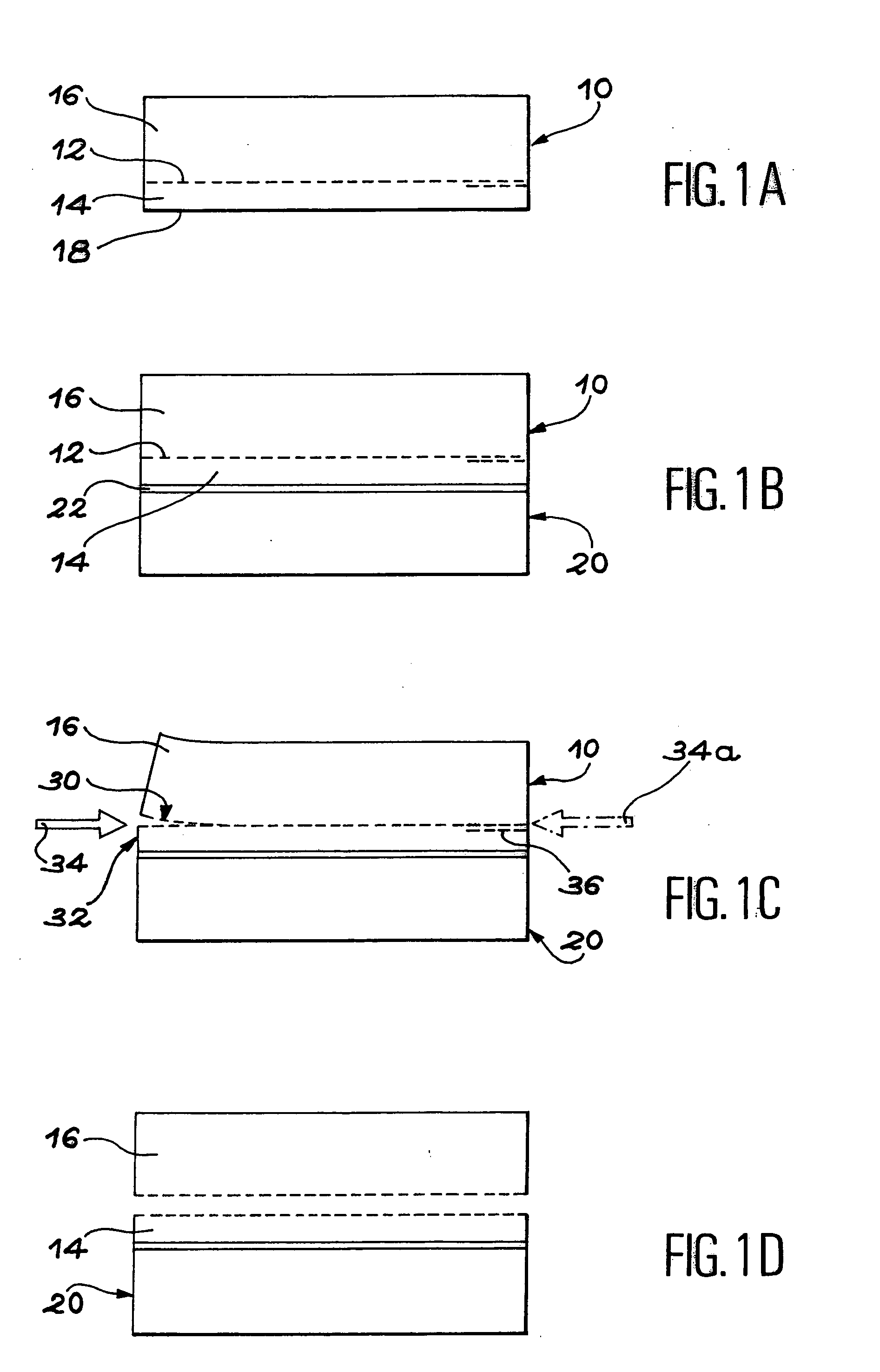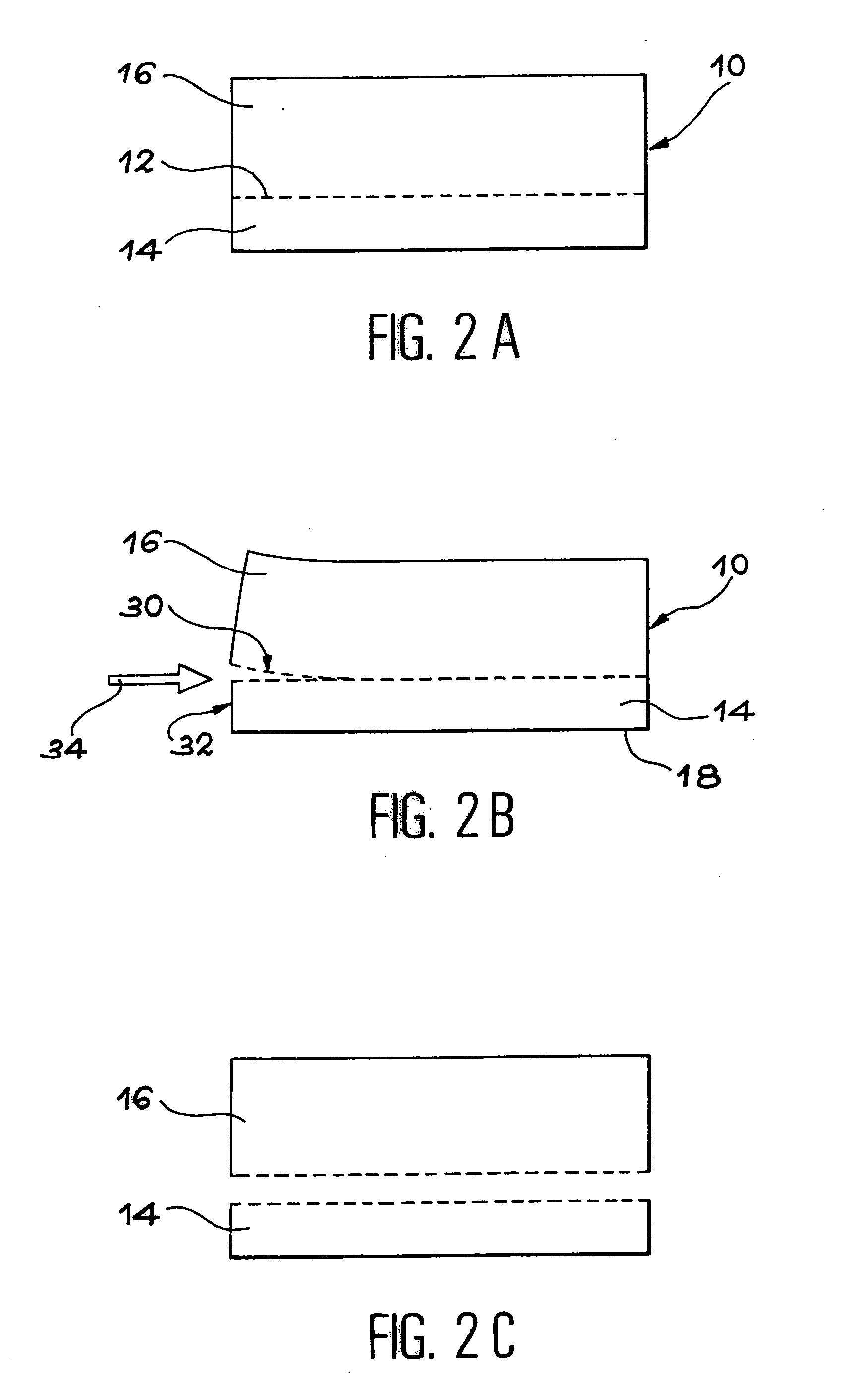Method for cutting a block of material and forming a thin film
a technology of a block and a thin film is applied in the field of cutting a, which can solve the problems of inability to apply mechanical efforts on the source substrate and/or the target support, inability to meet the requirements of thermal treatment at too high temperature, and inability to meet the requirements of materials
- Summary
- Abstract
- Description
- Claims
- Application Information
AI Technical Summary
Problems solved by technology
Method used
Image
Examples
Embodiment Construction
[0012] The aim of the invention is to propose a cutting out method making it possible, in particular, to form and transfer thin films, without the limitations mentioned above.
[0013] A further aim of the invention is to propose a cutting out method able to be implemented with a reduced energy budget and in particular a reduced thermal budget.
[0014] Another aim of the invention is to propose an economical process in which an eventual implantation of impurities, intended to form an embrittled zone, can be carried out with a reduced dose.
[0015] In order to attain these aims, the invention has more precisely the aim of a method for cutting out a block of material, comprising the following stages:
[0016] (a) the formation in the block of a buried zone, embrittled by at least one stage of ion introduction, the buried zone defining at least one superficial part of the block,
[0017] (b) the formation at the level of the embrittled zone of at least one separation initiator by the use of a first...
PUM
| Property | Measurement | Unit |
|---|---|---|
| length | aaaaa | aaaaa |
| mechanical | aaaaa | aaaaa |
| molecular contact adhesion | aaaaa | aaaaa |
Abstract
Description
Claims
Application Information
 Login to view more
Login to view more - R&D Engineer
- R&D Manager
- IP Professional
- Industry Leading Data Capabilities
- Powerful AI technology
- Patent DNA Extraction
Browse by: Latest US Patents, China's latest patents, Technical Efficacy Thesaurus, Application Domain, Technology Topic.
© 2024 PatSnap. All rights reserved.Legal|Privacy policy|Modern Slavery Act Transparency Statement|Sitemap



